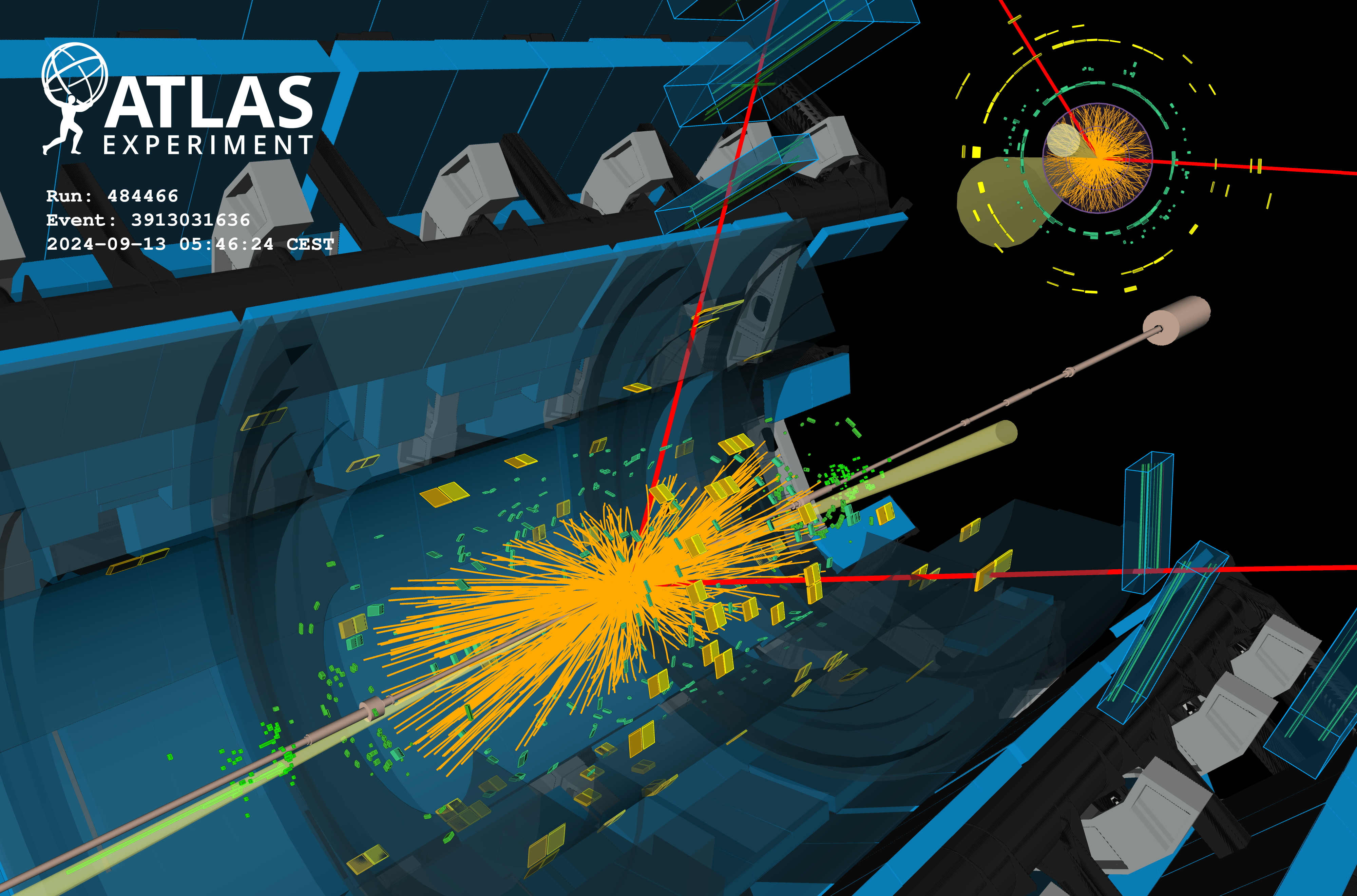Searching for Higgs boson interactions with the lightest charged lepton
6 August 2019 | By
Does the Higgs boson follow all of the rules set by the Standard Model? Since discovering the particle in 2012, the ATLAS and CMS Collaborations have been hard at work studying the behaviour of the Higgs boson. Any unexpected observations could be a sign of new physics beyond the Standard Model.

In the Standard Model, the strength of the interactions between the Higgs boson and matter particles (quarks and leptons) is proportional to the particle’s mass. In the case of charged leptons, the strength of the interaction with the Higgs boson is expected to be largest with the tau – the heaviest charged lepton – and smallest with the electron – the lightest charged lepton.
The decay of the Higgs boson into a pair of electrons is allowed by the Standard Model, but is so extraordinarily rare that it is not expected to be observed by ATLAS. For context, the Higgs boson is around 40,000 times less likely to decay into electrons as it is into muons, for which ATLAS only recently presented updated preliminary search results. Were ATLAS to observe the Higgs boson decaying to an electron pair, a new-physics process would have to be responsible.
The Standard Model also predicts that when the Higgs boson interacts with a charged lepton, the lepton does not change its type (or flavour). Thus, the Higgs boson should decay to a pair of electrons, muons or taus – but not, for example, into both an electron and a muon, or a tau and a muon. Such decays are known as “lepton-flavour-violating decays” and appear in many new-physics theories.
ATLAS has released new searches for two additional Higgs boson decays: into an electron pair (H→ee), and into the flavour-violating combination of an electron and a muon (H→eµ).

ATLAS physicists have already searched for two such decays, in which the Higgs boson decays to a tau and either an electron or a muon (H→eτ or H→µτ). The search utilised machine learning techniques and found no significant excess above the expected background. The result placed upper limits on the branching ratios of H→eτ and H→µτ of 0.47% and 0.28%, respectively, at the 95% confidence level.
This week, at the Lepton-Photon Symposium in Toronto, Canada, the ATLAS Collaboration presented new searches for two additional Higgs boson decays: into an electron pair (H→ee), and into the flavour-violating combination of an electron and a muon (H→eµ).
The new H→ee search is a first for the ATLAS Collaboration. This particular channel is especially difficult to study, as the majority of electron-pair events are expected originate from Z boson decays (Z→ee). The Higgs boson decay would be seen as a “bump” in the invariant mass of the electron pair, on top of the large Z→ee background. Physicists found no such excess in the data and were able to set an upper limit on the H→ee branching ratio of 0.036% at the 95% confidence level.
The search for H→eµ was performed in a similar manner, although the expected background processes are smaller and originate from a number of processes. As in the case of the search for H→ee, no significant excess of events was observed and an upper limit of 0.006% was set on the H→eµ branching ratio at the 95% confidence level.
With these new analyses completed, the ATLAS Collaboration has now searched for all possible Higgs boson decays to two charged leptons. However, the work is not yet finished, and ATLAS will continue to thoroughly investigate the interactions of charged leptons with the Higgs boson.
Links
- Search for the decays of the Higgs boson H→ee and H→eμ in proton-proton collisions at 13 TeV with the ATLAS detector (ATLAS-CONF-2019-037)
- Searches for lepton-flavour-violating decays of the Higgs boson in 13 TeV proton-proton collisions with the ATLAS detector (arXiv: 1907.06131, see figures)
- Lepton Photon 2019 plenary presentation: Overview of the ATLAS Experiment by Pierre Savard
- Lepton Photon 2019 parallel presentation: Higgs and Electroweak Physics at the LHC by Jonas Strandberg
- ATLAS searches for rare Higgs boson decays into muon pairs, ATLAS Physics Briefing, 11 July 2019
- Beyond any doubt: Higgs boson couples to the heaviest lepton, ATLAS Physics Briefing, 8 June 2018
- See also the full lists of ATLAS Conference Notes and ATLAS Physics Papers.





